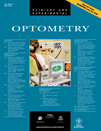
Clinical and Experimental Optometry
Scope & Guideline
Catalyzing breakthroughs in clinical and experimental optometry.
Introduction
Aims and Scopes
- Clinical Research in Optometry:
The journal publishes studies that investigate clinical practices, treatment outcomes, and patient care strategies in optometry, aiming to improve clinical practices and patient outcomes. - Technological Innovations in Eye Care:
Research related to advancements in optical technology, including diagnostic tools, imaging techniques, and telemedicine, is a core focus, reflecting the journal's commitment to integrating technology into optometric practice. - Public Health and Community Eye Health:
The journal emphasizes the importance of public health initiatives, epidemiological studies, and community-based eye care programs, particularly for underserved populations. - Education and Professional Development:
A significant aim is to enhance optometry education through the dissemination of best practices, competency standards, and innovative teaching methodologies. - Interdisciplinary Approaches to Eye Care:
The journal fosters interdisciplinary research that explores the connections between optometry and other health disciplines, particularly in managing systemic diseases with ocular implications.
Trending and Emerging
- Artificial Intelligence and Machine Learning:
There is a growing trend towards the application of AI and machine learning in optometry, particularly in diagnostics and treatment planning, indicating a significant shift towards data-driven practices. - Teleoptometry and Remote Care:
Research exploring teleoptometry and remote patient management is on the rise, driven by the need for accessible eye care services, especially highlighted during the COVID-19 pandemic. - Myopia Control Strategies:
Emerging studies focused on innovative strategies for myopia control, including pharmacological treatments and new optical devices, reflect an increasing concern over the global rise in myopia. - Integrative and Holistic Approaches to Eye Health:
There is a notable increase in research exploring holistic approaches to eye health, considering the interplay between systemic health and visual function. - Cultural Competence in Eye Care:
Emerging themes emphasize the importance of culturally competent care in optometry, with research focusing on health disparities and tailored interventions for diverse populations.
Declining or Waning
- Traditional Optometric Treatments:
There is a noticeable decline in research focusing solely on conventional optometric treatments, as the field increasingly embraces integrative and technology-driven approaches. - Basic Refractive Error Studies:
Studies solely focused on basic refractive errors and their management are becoming less frequent, suggesting a shift towards more complex conditions and multifactorial approaches to vision care. - Aging Population Studies:
Research specifically targeting aging populations is diminishing, possibly due to the increasing emphasis on broader public health implications and community eye health initiatives. - Surgical Techniques in Optometry:
There appears to be a waning interest in papers solely dedicated to surgical techniques within optometry, as the field increasingly incorporates collaborative care and advanced technologies.
Similar Journals

Spektrum der Augenheilkunde
Empowering Professionals through Eye ResearchWelcome to Spektrum der Augenheilkunde, a distinguished journal published by SPRINGER WIEN, dedicated to the field of ophthalmology since its inception in 1987. With an ISSN of 0930-4282 and an E-ISSN of 1613-7523, this journal is recognized for its commitment to publishing original research, reviews, and clinical studies that address current and emerging topics in eye health and treatment. Although classified in the Q4 category for ophthalmology as per the latest 2023 rankings, it serves as a valuable platform for researchers, professionals, and students looking to contribute to and expand their knowledge in this vital area of medicine. Based in Austria and accessible through various academic databases, the journal aims to foster communication among professionals and advance the understanding of ocular diseases, innovative therapies, and clinical best practices.
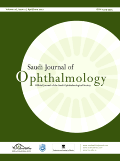
Saudi Journal of Ophthalmology
Enhancing Outcomes: Dedicated to the Science of Eye CareSaudi Journal of Ophthalmology, published by Wolters Kluwer Medknow Publications, stands as a crucial platform for the dissemination of innovative research and clinical practices in the field of ophthalmology. Since its inception in 2009, this journal has effectively contributed to the growing body of knowledge with a focus on addressing the diverse visual health challenges faced globally. With an ISSN of 1319-4534 and a E-ISSN of 2542-6680, the journal is indexed in Scopus, where it ranks in the Q3 category of ophthalmology, reflecting its commitment to quality research despite the competitive landscape. Situated in India, it provides a unique regional perspective while facilitating global discourse among researchers, practitioners, and students in ophthalmological sciences. Although it currently does not operate as an open-access journal, the Saudi Journal of Ophthalmology is essential for those aiming to expand their understanding of advancements in eye care, making it a valuable resource for professionals dedicated to enhancing patient outcomes through informed research and clinical practice.
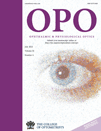
OPHTHALMIC AND PHYSIOLOGICAL OPTICS
Illuminating the path to understanding visual systems.Ophthalmic and Physiological Optics, published by Wiley, is a premier peer-reviewed journal dedicated to advancing the fields of ophthalmology, optometry, and sensory systems. With an impressive impact factor and categorized in the prestigious Q1 quartile for 2023 across multiple disciplines, the journal provides a vital platform for researchers and practitioners to disseminate innovative findings and explore the complexities of visual science. Founded in 1981, it continues to thrive as a leading resource for reviewing contemporary issues, emerging technologies, and clinical practices. Readers will benefit from its rigorous editorial standards and access to groundbreaking studies pertinent to both academic and clinical environments. Situated at the forefront of the discipline, Ophthalmic and Physiological Optics plays an essential role in bridging the gap between research and practical application, ensuring a comprehensive understanding of vision and its physiological underpinnings.
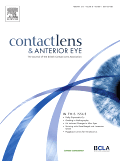
Contact Lens & Anterior Eye
Fostering Innovation in Contact Lens TechnologyContact Lens & Anterior Eye is a premier journal dedicated to advancing the field of optometry, ophthalmology, and overall visual health. Published by Elsevier, this journal boasts an impressive impact factor and is indexed with both ISSN 1367-0484 and E-ISSN 1476-5411. It stands out with a Q1 ranking in the categories of Medicine (miscellaneous), Ophthalmology, and Optometry, placing it at the forefront of scholarly research in its disciplines. With a comprehensive scope that encompasses the latest advancements in contact lens technology and anterior eye health, the journal serves as a crucial resource for researchers, healthcare professionals, and students aiming to enhance their knowledge and skills. The journal has been publishing cutting-edge research since its inception in 1997 and continues to pave the way in ophthalmic research through high-quality, peer-reviewed articles. Although it does not currently offer Open Access options, its availability through institutional subscriptions ensures that critical research reaches its intended audience effectively.
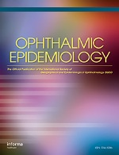
OPHTHALMIC EPIDEMIOLOGY
Connecting Epidemiology with Ophthalmic InnovationOphthalmic Epidemiology, published by Taylor & Francis Inc, stands as a crucial platform in the fields of ophthalmology and epidemiology, with the journal's pivotal contributions recognized in its esteemed category quartiles, ranking Q1 in Ophthalmology and Q2 in Epidemiology for 2023. Since its inception in 1994, the journal has provided a multidisciplinary approach to understanding the distribution and determinants of ocular diseases, thereby informing public health practices and clinical interventions. With a commitment to disseminating high-impact research, it holds a Scopus rank of #45/137 in Ophthalmology and engages a global audience of researchers, practitioners, and students dedicated to advancing the field. Although it is not an open-access journal, Ophthalmic Epidemiology remains a vital resource for innovative studies and reviews that help shape evidence-based strategies to combat vision-related public health issues.

JAPANESE JOURNAL OF OPHTHALMOLOGY
Leading the Charge in Ophthalmic DiscoveriesJapanese Journal of Ophthalmology, published by Springer Japan KK, is a premier peer-reviewed journal dedicated to advancing the field of ophthalmology. With an impressive impact reflected in its Q1 categories—ranking among the top journals in both Medicine (miscellaneous) and Ophthalmology, as per the 2023 metrics—it serves as an essential platform for researchers and professionals to disseminate their findings. Covering a broad spectrum of topics from clinical studies to innovative technologies in eye care, this journal not only supports the ongoing education of its readership but also fosters significant developments within the field. The journal, which has been in circulation since 1973 and is set to continue through 2024, offers access to vital research, thereby enabling practitioners and scholars to keep abreast of the latest advancements. Its distinguished Scopus ranking of #30 out of 137 in Medicine - Ophthalmology, placing it in the 78th percentile, further underscores its influence and importance in contributing to the global understanding of eye health.
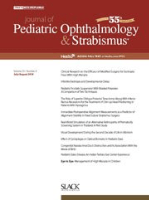
JOURNAL OF PEDIATRIC OPHTHALMOLOGY & STRABISMUS
Exploring breakthroughs in pediatric ophthalmology.The Journal of Pediatric Ophthalmology & Strabismus, published by SLACK INC, is an esteemed academic journal dedicated to the field of pediatric ophthalmology and strabismus. Since its inception in 1978, this journal has continuously provided a vital platform for the dissemination of innovative research, clinical practices, and advancements in the understanding of eye conditions affecting children. With an impressive two Q2 quartile ranking in Medicine, Ophthalmology, and Pediatrics as of 2023, the journal underscores its significance in contributing to the medical community by fostering scholarly dialogue and knowledge exchange. While not an open-access journal, it offers a comprehensive set of articles aimed at enhancing the diagnostic and therapeutic approaches available to practitioners in the field. Researchers, clinicians, and students alike will benefit from its rigorously peer-reviewed content, which aims to improve pediatric eye care and promote better health outcomes for children. Join the discourse that shapes the future of pediatric ophthalmology!
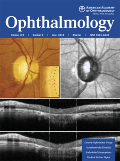
OPHTHALMOLOGY
Setting the standard for excellence in ophthalmic research.OPHTHALMOLOGY is a leading journal in the field of ocular health, widely recognized for its contributions to advancing the understanding and treatment of ophthalmic conditions. Published by ELSEVIER SCIENCE INC in the United States, it has earned a prestigious place within the academic community, boasting a remarkable Q1 ranking in the ophthalmology category for 2023, along with an impressive Scopus rank of #2 out of 137, placing it in the 98th percentile. With a strong publication history dating back to 1958, OPHTHALMOLOGY encompasses high-quality research articles, reviews, and clinical studies that address critical issues in the field. Researchers, professionals, and students alike can access its comprehensive research through traditional subscription options, fostering an ongoing dialogue among experts. Whether you are seeking the latest treatments, understanding complex ocular diseases, or looking to advance your knowledge, OPHTHALMOLOGY remains an essential resource for cutting-edge research and insights.

Journal of the Korean Ophthalmological Society
Advancing the Frontiers of Eye CareThe Journal of the Korean Ophthalmological Society, with ISSN 0378-6471 and E-ISSN 2092-9374, is a pivotal resource in the field of ophthalmology, published by the esteemed Korean Ophthalmological Society. Based in South Korea, this journal is committed to advancing knowledge in ophthalmology through the dissemination of research that spans both clinical and experimental studies. Despite its current Q4 ranking in the 2023 Ophthalmology category, it serves as a crucial platform for emerging scholars, practitioners, and students seeking to contribute to and learn from the latest developments in eye care. While the journal does not currently offer open access, it is dedicated to fostering scientific dialogue and innovation within the community. With convergence years from 2018 to 2024, the journal's focus on contemporary issues in ophthalmology positions it as a relevant and timely source of information, critical for those engaged in this dynamic field. For further inquiries, the journal can be contacted at their address in Seoul, South Korea: SKY 1004 BLDG 701, 50-1 Jungnim-ro, Jung-gu, 04508.

Journal of Optometry
Connecting scholars and practitioners in vision science.The Journal of Optometry, published by Elsevier, is a leading open access journal dedicated to advancing the field of optometry and vision science. With an ISSN of 1888-4296 and an E-ISSN of 1989-1342, this journal serves as a pivotal platform for researchers, practitioners, and academics alike to disseminate and engage with high-quality original research and review articles. As of 2023, the journal holds an impressive Q2 ranking in the Optometry category, demonstrating its influence and relevance, particularly as it ranks #2 out of 12 in the Health Professions - Optometry category on Scopus with an 87th percentile. Since becoming open access in 2008, the Journal of Optometry has prioritized accessibility and the exchange of ideas, enriching the scholarly community and enhancing practical application in clinical settings. The journal welcomes submissions that push the boundaries of ocular research, clinical practices, and the education of optometry professionals, making it an essential resource for anyone invested in the future of eye health.